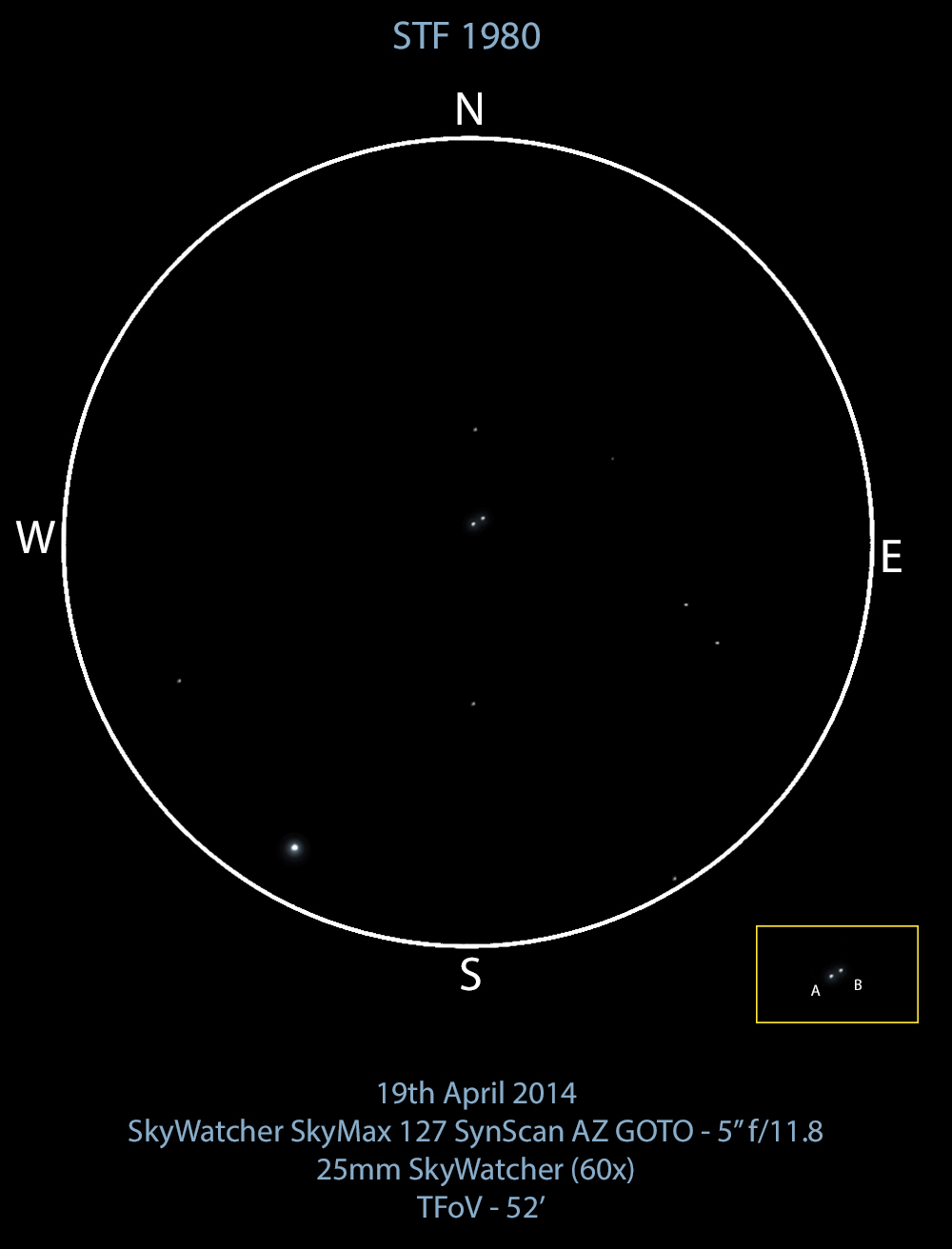My continued adventure to try and observe double stars in Ursa Minor has entered its third chapter with another three stars observed and sketched. The double stars I am going to discuss tonight are STF 1583, STF 1928 & STF 1980 whose locations are shown below.
STF 1583 (HIP 58531 / SAO 1966)
RA : 12 00 10.43 Dec: +86 59 40.0
Magnitudes: 8.1, 9.3
Separation: 11.3”
Position Angle: 285°
Whilst looking for this star I discovered that the SAO number was not in the GOTO database which meant using the Right Ascension and Declination co-ordinates to find it. As always, my pre study of the locale via Stellarium was very useful in helping me confirm I had the right target. Both components were pretty clear with a reasonable separation evident however whilst the primary stars A2 classification would imply a potential white blue colour it just looked like standard white to me. Then again I have to admit that unless stars are quite vivid in their colour I tend to struggle at seeing anything beyond white.
STF 1928 (SAO 8177)
RA : 15 09 17.20 Dec: +72 27 16.4
Magnitudes: 9.6, 10.2
Separation: 6.5”
Position Angle: 275°
Without doubt this was the most difficult target of the night, as with the previous star it didn't come up in the SAO catalogue on my GOTO mount and I had to use the Right Ascension and Declination co-ordinates. However, the reason I struggled was the close separation and low magnitude of the stars involved when I was looking at them in a Spring evening which wasn't that dark.
I was forced to employ averted vision to make out the lower magnitude companion and even then it was only a fleeting look. The separation wasn't actually that bad and on a darker night I don't think I would have had any issue to be honest. Either way, the double star itself was fairly regular with both components appearing to be white. The real dominant star in the eyepiece was actually HIP 70942 which shines at a brighter magnitude of and 7.8 and can be seen in the sketch below at the 7 o'clock position.
STF 1980 (SAO 2568)
RA : 15 32 27.04 Dec: +81 03 10.4
Magnitudes: 9.2, 9.5
Separation: 10.1”
Position Angle: 49°
The third double star of the night and another no go with the SAO number, I may need to look up how many SAO numbers are actually present in the database as a fair few don't seem to be there when I look for them. The similar magnitudes of the stars involved with this double made it quite easy to make out and split in my 25mm eyepiece. The primary appeared to be white which ties in with the F0 stellar classification, however I haven't been able to discover the stellar classification of the secondary component but to me it looked almost identical to the primary.
Overall, it was another successful double star hunt although the lighter skies are making it harder to make out the dimmer stars. Hopefully I will manage another night or two out looking at some more doubles before summer fully closes in and the telescope gets retired for a few months.




No comments:
Post a Comment